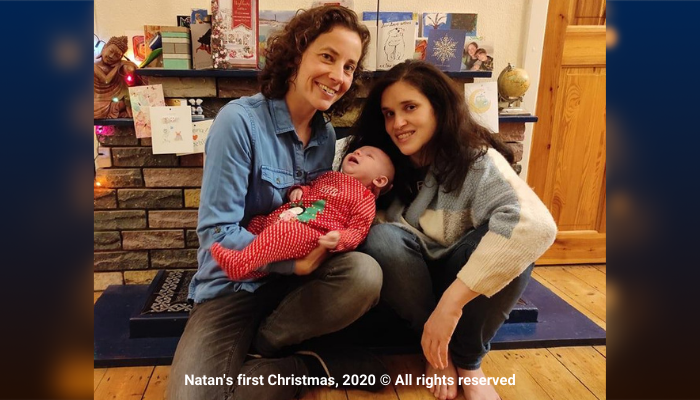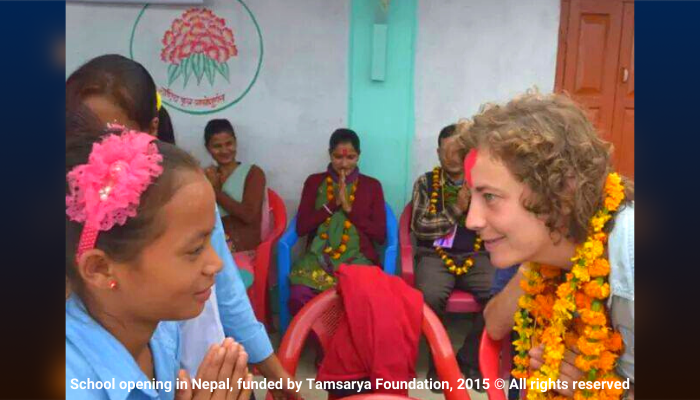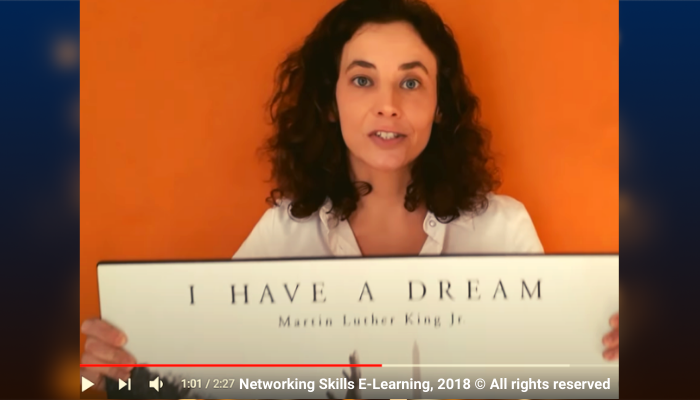
‘Where are you actually from?’
‘You should meet my friend who is gay too!’
‘You must be our new intern since you look so young!’
‘Why do you wear a headscarf?’
‘It’s so inspiring how you’ve overcome your disability!’
It’s that time again. A topic has been racing through my head. I was led to read about it, take a course on it and discuss it persistently. This is how I learn best – I am a typical self-learner.
This topic has actually been one of my topics of interest for years. Reading about Martin Luther King when I was ten first sparked my interest in it, which was intensified when I realised, in my late teens, that I was gay. Finally, my encounters with people from different countries while backpacking and living in Germany and the United Kingdom influenced me.
The title of this blog has already given it away: Diversity and Inclusion. In this blog, I will walk you through my train of thoughts, by sharing research results and personal experiences, supporting my belief that diversity and inclusion programs are still extremely relevant.
(un)Intentional Discrimination
The five questions I started this blog with seem innocent, don’t they? But they are a form of discrimination called microaggression. Microagressions are statements, actions, or incidents that consist indirect, subtle, or unintentional discrimination against members of a marginalized group. By definition, microaggressions are ambiguous: recipients might feel vaguely insulted, but since the statement sounds, on the surface, like a compliment, they cannot justify feeling insulted and don’t know how to respond. I’ll briefly analyse the above-mentioned comments.
‘Where are you actually from?’
Asking someone about their ethnic heritage appears to be merely a way to get to know someone but receiving that question again and again can imply that a person doesn’t truly belong in their country, just because of their appearance.
‘You should meet my friend who is gay too!’
Just because two people have one thing in common, doesn’t mean they’d be a match. The fact that there are fewer people to date, doesn’t mean gay people don’t have standards concerning personality type, values etc.
‘You must be our new intern since you look so young!’
The comment focuses attention on appearance rather than on a person’s credentials and it may subtly undermine a person’s authority on the job. Remarking on someone’s ostensibly young age also implies that they seem inexperienced or potentially unqualified for their job.
‘Why do you wear a headscarf?’
Those who are Jewish, Sikh, Muslim or members of other religions and choose to wear head coverings aren’t representative of their entire religion. If you want to learn more about that religion, you shouldn’t ask people while they’re just trying to do their job.
‘It’s so inspiring how you’ve overcome your disability!’
‘I wish we didn’t have such low expectations of disabled people that we are congratulated for getting out of bed and remembering our own names in the morning,’ said comedian Stella Young. Don’t be shocked when a coworker with a disability does a great job.
Implicit Stereotyping
Microaggressions are often influenced by unconscious bias. Unconscious bias refers to our attitudes, perceptions and stereotypes that influence our understanding, actions, and behaviour when interacting with various identities. These preferences are developed through exposure to stereotypes and misinformation informed by our upbringing and life experiences.
Science says our minds make decisions intuitively before we’re aware of it. Research proves that too. We like to think that logical arguments drive our decision making, but in fact, there’s unconscious activity going on inside our brains that affects our judgements and decisions.
In the hiring process, unconscious bias happens when opinions about candidates are formed based solely on first impressions. This can lead to a decision based on criteria irrelevant to the job. The focus should be on personality traits, experiences, attitude and more, not on what the candidate looks and sounds like, or where they come from.
What Has Gone Wrong?

I remember thinking as a ten-year-old that when I am over 30, such phenomena as racism, homophobia and gender inequality will no longer exist. When I was 24, I was backpacking in Central America and adding friends on Facebook from all over the world. I remember hoping that social media would connect and unite us all. When moving to ‘start-up city’ Berlin when I was 33 I still believed that the new tech businesses would do things differently and wouldn’t discriminate against anyone.
However, up until this last year, I kept seeing articles that showed me the opposite. Just to name a few:
- Google will pay $2.5 million to underpaid female engineers and overlooked Asian applicants (1/2/2021)
- Why women don’t speak up on Zoom calls – and why that’s a problem (7/1/2021)
- Black employees allege racial discrimination at Facebook in new legal complaint (2/7/2020)
I read the above articles and reality strikes me. And I wonder, where did it go wrong? What did we do wrong? Who did what wrong?
Diversity Matters
Diverse minds lead to more productivity, diverse problem solving, better employee engagement and more. A diversity and inclusion program which was once merely seen as window dressing has become a critical issue for businesses. The question is do businesses already realise this?
Profit According to the research in “Diversity Matters” by McKinsey & Co, businesses in the top quartile for racial and ethnic diversity are 35% more likely to have financial returns above their competitors. The ones in the top quartile for gender diversity 15%.
Decision-making In a study by Cloverpop is stated that inclusive teams make better business decisions up to 87% of the time and deliver 60% better results. Teams that follow an inclusive process make decisions twice as fast with half the meetings.
Talent Research by Glassdoor showed that 66% of active and passive job seekers believe that a diverse workforce is important, minority groups even more so. They take it into account when evaluating their potential new employer.
Diversity Strategy
Since the 60s businesses have been relying on diversity training to reduce bias on the job and grievance systems to give employees a way to challenge managers. The efforts do not seem to have led to the desired changes in the workplace. Changing beliefs and behaviours in a business cannot be achieved merely with a series of training or hiring more ‘diverse’ candidates. Research has shown that what is most important is that a diversity strategy is integrated into the core business. Moreover, research also showed the importance of
Time Training should be spread over an extended period of time and not just a once-a-year occurrence.
People A diversity manager leads to a focus on the topic and less chance of people to act on bias since they will have to explain their decisions. Task forces promote accountability, engage members and increase contact among the people who participate.
Approach Businesses get better results when they ease up on control tactics. It’s more effective to engage managers in solving problems, increase their on-the-job contact and promote social accountability. Also, a diverse diversity and inclusion program that encourages underrepresented talent to join, stay, succeed and lead within a business works well.
Content The training should target all the employees and address issues including microaggressions, unconscious bias, and cross-cultural communications. Mentoring can be good for engaging managers and chip away at their biases and provide opportunities for marginalised groups’ needed skill development and networking. Implementing a targeted college recruitment program has also proved effective.
Data Many decisions made by hiring managers and businesses are based on a gut feeling. More decisions need to be based on objective data and insights into the attitudes and behaviours of current employees on diversity and inclusion.
Word-use, Training-focus and Collectivism

While diving into this topic several questions raised around word-use, training-focus and collectivism that I would like to share with you.
Word-use We talk about ‘microaggression’ and say that as long as people ‘mean well’ what they say is okay. I just wonder, what if we start saying ‘aggression‘ instead and only accept ‘doing good’? Words and their meaning matter. Also, look at the term diversity and inclusion, this implicitly suggests that to be diverse is to be different from the white dominant culture. Pursuing equity is about having access to and being equal to this culture.
I too struggle at times with choosing the right words not to hurt a person’s feelings and their self-definition. Over time, the meaning of words changes, which makes it even harder to keep using the right words. Should/can I say black person/person of colour, gay/queer, diversity and inclusion program/belonging, dignity and justice program? I believe it is my task to educate myself in finding the words that do not hurt, insult or exclude someone else and to speak out when I question someone’s word-use.
Training-focus Most diversity and inclusion training is focused on making all employees understand unconscious bias and microaggressions. They are not (also) focussed on teaching marginalised groups how to react the best way when they are faced with discrimination. Also, it seems that existing initiatives only expose discriminatory attitudes, but do nothing to mitigate their effects on those who suffer from them.
I’ve heard so many stories of people leaving a party, a meeting, an after-work drink feeling sad not knowing why only realising later that it was this one discriminatory comment that nobody said anything about and they didn’t know how to respond to.
Collectivism I notice that being part of one outgroup doesn’t mean that you support people from other outgroups. It sometimes seems like each outgroup is on its own island. We also see this in allyship initiatives at businesses, which are oftentimes focused on a specific marginalised.
I wonder about the consequences of the focus on specific outgroups, shouldn’t it be about the inclusion of all? I’ve heard and experienced plenty of times myself, that people are just tired of having to speak out for their own group. Wouldn’t it be great if more people spoke out when something negative is said about a marginalised group?
Who Is the Man In Your Relationship?
Finally, I would like to share one personal experience. A couple of years ago I organised a networking event in Berlin. At the end of the evening, only three guys and I were left at the event. One of them at a certain point asked me ‘Who is the man in your relationship?’ I had been asked this before, but at that moment, I just reached my limit. He might have meant well and just didn’t realize how insulting his question was. I just couldn’t laugh it away (sounds familiar?) this time around.
While the other guys were grinning a bit, I looked at the one that posed the question quite seriously and asked him what he did not understand about me and my girlfriend both being women? I also told him that his question wasn’t funny. His question presumed that a relationship without a man is impossible and that love between two women cannot be taken seriously. I thought I am dealing here with a guy in his 30s, not an 80-year-old man (yes, in that case, my response could have been different). I felt that he should know better and that I was just done with dealing with that kind of question. I don’t think he ever asked this question again.
Looking back I think how great I would have felt if another person would have made the comments I made and how strengthened I would have felt if I had already had several strong possible answers ready in my head.
Inclusive Legacy

Even though the benefits of having a diverse and inclusive workforce are clear — research has shown this time and again — many businesses struggle with making this reality. There is still a lot of work to do if you look at the numbers and what ‘new’ businesses are doing. New perspectives on how to reach an inclusive workforce are being seen though.
My personal belief is that a process that is focussed on experiential learning, possibly with the help of Theory U and organisational constellation work, intended to inspire an inner conversion, build trust and grow collective consciousness will provide the means to move towards a climate and culture that allows everyone to reach their full potential and thrive.
I also believe that recent movements like Black Lives Matters and Me Too show us that new ways to make this change happen are being found. The ‘voices’ of the marginalised groups can’t do it alone though. It’s time for more people to raise their voice in order to leave an inclusive legacy behind.
Sources
Diversity and Inclusion In the Workplace MOOC – Essec Business School
Does Diversity Training Work the Way It’s Supposed To? – Harvard Business Review
Why Diversity Programs Fail – Harvard Business Review
Why Diversity Matters – McKinsey & Company
Diversity, Equity and Inclusion Have Failed. How about Belonging, Dignity and Justice Instead? – World Economic Forum
What Job Seekers Really Think About Your Diversity and Inclusion Stats – Glassdoor
Creating a Diversity and Inclusion Training Program – Business News Daily
Unconscious Bias In Recruitment: How Can You Remove It? – Workable
What Is a Microaggression? 14 Things People Think Are Fine to Say at Work But Are Actually Racist, Sexist, or Offensive – Business Insider
© 2021 Floorish — All rights reserved
